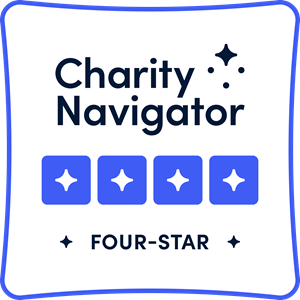Impact Investing: If Not Now, When?
Nearly two years ago, the Federation’s Managing Director of Philanthropy Sue Reinhold, Ph.D. wrote a blog post observing that within larger nonprofits, more and more donors exhibited a tendency to save their Donor-Advised Funds (DAFs) and other irrevocable philanthropic gifts for later use. They were “too concerned about growing a corpus of capital when they really should be focused on getting as much of that money as possible out into the community.” It was as if well-intentioned donors were treating their DAFs like a philanthropic rainy-day fund for a moment that would never come. But the onset of a devastating world pandemic is a jolting reminder that sometimes storms come unexpectedly.
Impact investing is providing shelter from the storms.
So what exactly is it?
Impact investments are created with the “intention to generate positive, measurable social and environmental impact alongside a financial return.” Forbes looks at impact investing as a hybrid that “combines both the rigorous analytics of traditional investment and the heart of philanthropy.”
Tanya Shadoan, the Federation’s Director of Philanthropy Operations and Impact Investing, describes it in even more pithy terms: “It’s unleashing the power of capital for social good.” Moreover, it is unleashing that power to the people who need it now, not at some undetermined date. And thus, the impact of your investment is made almost immediately.
While grantmaking is always a priority, our impact investing offerings give donors the additional benefit of capital ”recycling.” Through these giving opportunities, donors can get dollars into the hands of those who need support now, with the expectation that these funds will be returned to their DAF at the end of the term, to be used again for future philanthropic giving.
Philanthropic Recycling
Consider, for example, longtime Federation partner Hebrew Free Loan. A three hundred thousand dollar grant they received approximately 11 years ago enabled the organization to make loans in five key areas: emergency, personal loans, unemployment, debt consolidation, and student loans. “Well, guess what,” said Tanya, “that three hundred thousand has been distributed to the tune of $1.5 million dollars because it has gone out and come back and gone out and come back and gone out again and come back over all these years… So you can take that initial three hundred thousand dollars and you can do a million and a half dollars’ worth of good in the community."
More and Better Jewish Philanthropy
Similarly, our Federation is in the process of putting out other impact investment offerings that will help people here and now. And while these opportunities represent a new strategic direction, they still are inspired by our core Jewish values of kehillah (community), tzedakah (giving with just intentions), tzedek (pursuit of justice), and tikkun olam (repairing the world).
Twenty years from now you will be more disappointed by the things you didn’t do than by the ones you did. – Mark Twain
In our legends, Joseph famously helps Egypt weather a famine by saving up grain for seven years, to the point where they had food to get through lean years. The midrash however argues that it's possible to store up too much grain and that some of that grain rotted and was not available to help when the time came. As Tanya contemplated the current state of our global financial markets, she stated “…and for all too many, that’s what is happening right now. But it’s also what impact investing can make a whole lot better. “I’m excited about this,” said Tanya. “I believe this can work… And I think that there are people who want this too. Now that we are thrown into this world of uncertainty, people’s desire to help goes up.”
For information on impact investment opportunities, please contact us.


